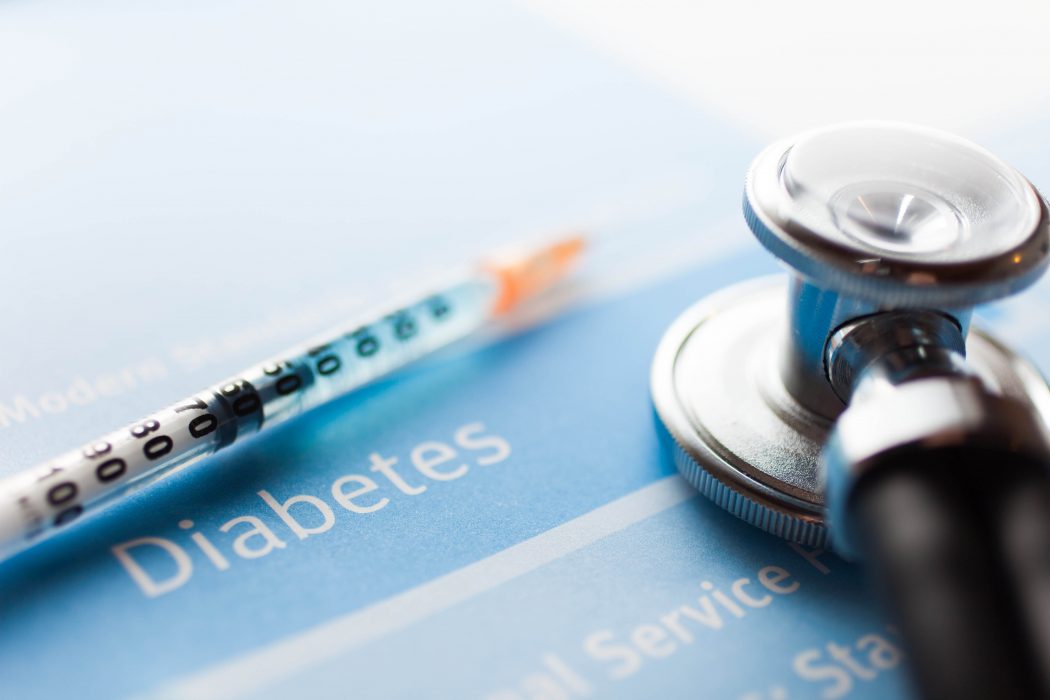
Acne Scar Treatment: Causes, Types, and Effective Solutions
Acne scars can be a lasting reminder of severe acne, affecting individuals’ self-esteem and confidence. Understanding the different types of acne scars and exploring various treatment options is essential for anyone seeking to improve the appearance of their skin.
This article delves into the nature of acne scars, common treatment methods, and preventive measures to help individuals manage and mitigate these scars effectively.
What Are the Different Types of Acne Scars?
Understanding Depressed Acne Scars
Depressed acne scars are often referred to as atrophic scars, which occur when the skin loses collagen during the healing process of acne lesions. These scars can manifest in various forms, including ice pick scars, boxcar scars, and rolling scars, each requiring different treatment uses for effective management. Ice pick scars are characterized by their deep and narrow appearance, creating a pitted look on the skin’s surface.
Boxcar scars have a broader, more angular shape, while rolling scars create a wave-like texture, both of which can affect skin care routines to get rid of acne scars. Understanding these different types of depressed scars is crucial for selecting the appropriate treatment for acne scarring.
Additionally, the treatment for these types of scars can vary significantly based on their distinct characteristics and the type of treatment chosen. For instance, ice pick scars may require a more invasive treatment method, such as surgical excision or punch grafting, to effectively remove the top layer of skin and promote healing in the surrounding skin.
In contrast, rolling scars may benefit from dermal fillers or laser resurfacing techniques that encourage collagen production and skin healing. Recognizing the type of acne scar present is vital for determining the most suitable course of action to improve the overall appearance of acne scars.
Characteristics of Raised Acne Scars
Raised acne scars, also known as hypertrophic or keloid scars, differ significantly from their depressed counterparts. These scars occur when the body produces excess collagen during the healing process, resulting in a raised surface on the skin. Hypertrophic scars remain confined to the original injury site, whereas keloid scars extend beyond the boundaries of the initial wound.
The appearance of raised scars can be particularly distressing, as they often stand out prominently against the skin’s surface. Understanding these characteristics is essential for effective acne scar treatment.
To reduce the appearance of raised acne scars, various treatments are available, including steroid injections, laser treatment, and silicone sheets. Steroid injections can help flatten the scar by reducing inflammation and collagen production, while laser treatment focuses on smoothing out the scar’s surface and improving skin texture. In some cases, surgical intervention may be necessary to excise the raised scar.
By recognizing the characteristics of raised acne scars, individuals can work with dermatologists to develop a tailored treatment plan aimed at minimizing their appearance.
Identifying Atrophic Acne Scars
Atrophic acne scars are a common consequence of moderate to severe acne, resulting from a loss of tissue in the skin, making effective skin care essential to get treatment.
These scars can take on various forms, including ice pick, boxcar, and rolling scars, each with unique attributes that influence their treatment and the skin care products used. Ice pick scars are the deepest and most challenging to treat, while boxcar scars have well-defined edges and a flatter appearance.
Rolling scars create a wave-like texture, making the skin appear uneven. Identifying the specific type of atrophic scar is crucial for determining the most effective treatment options available, including skin needling and chemical peels.
Effective acne scar treatments for atrophic scars often involve resurfacing techniques, such as chemical peels or laser resurfacing. These treatments aim to remove the top layer of skin, promoting the growth of new, healthy skin cells.
Additionally, microneedling can stimulate collagen production, enhancing skin texture and reducing the visibility of scars over time. Understanding the characteristics of atrophic acne scars allows individuals to select appropriate treatments and set realistic expectations for improving their skin’s appearance.
What Are the Most Common Treatment Options for Acne Scarring?
Exploring Chemical Peels as a Scar Treatment
Chemical peels are a popular treatment option for addressing acne scars due to their ability to remove the top layer of skin and promote the regeneration of new skin cells, making them an effective type of treatment. This process helps to improve the overall texture of the skin and reduce the appearance of scars.
Chemical peels come in various strengths, ranging from superficial to deep, depending on the severity of the scarring and the individual’s skin type. Superficial peels can provide mild improvement, while deeper peels may be more effective for treating deeper scars.
During a chemical peel, a solution is applied to the skin, which exfoliates and removes damaged layers from the surface of the skin. This treatment not only enhances the appearance of acne scars but also improves skin tone and texture. Patients may experience some redness and peeling following the treatment, but these effects are temporary and usually subside within a week.
By exploring chemical peels as a viable treatment option, individuals can achieve significant improvements in the appearance of acne scars while enjoying the added benefits of overall skin rejuvenation.
Benefits of Laser Treatment for Acne Scar Treatment
Laser treatment has emerged as one of the most effective solutions for reducing the appearance of acne scars. This approach utilizes focused light energy to target the skin’s surface, promoting collagen production and skin healing.
Various types of laser treatments are available, including ablative and non-ablative lasers. Ablative lasers remove the outer layer of skin, making them suitable for deeper scars, while non-ablative lasers stimulate collagen production without damaging the skin’s surface, making them ideal for more superficial scars.
The benefits of laser treatment extend beyond scar reduction. Patients often experience improved skin texture and reduced pore size, leading to an overall more youthful appearance.
Additionally, laser treatments can be customized to suit individual skin types and specific scar characteristics, ensuring optimal results. While some redness and swelling may occur post-treatment, these effects typically resolve within a few days. Overall, laser treatment offers a promising option for those seeking to improve the appearance of their acne scars effectively.
Comparing Different Treatments for Acne Scars
When considering treatment options for acne scars, it is essential to compare different methods to determine the most suitable approach for individual needs.
Treatments such as chemical peels, laser resurfacing, and microneedling each offer unique benefits and target specific types of scars. For instance, chemical peels can effectively address superficial scars and improve overall skin texture, while laser treatments are often more effective for deeper scars and uneven skin tone.
Moreover, microneedling is an innovative option that promotes collagen production by creating tiny micro-injuries in the skin. This method is particularly beneficial for individuals with atrophic scars, as it encourages skin healing and regeneration.
By evaluating the effectiveness of treatment options, individuals can make informed decisions about their acne scar treatment journey, ensuring they achieve the desired results based on their skin type and scar characteristics.
How Can You Prevent Acne and Its Scars?
Effective Acne Treatment Strategies
Preventing acne and its associated scars begins with implementing effective acne treatment strategies. A comprehensive skincare routine that includes gentle cleansing, exfoliation, and the use of non-comedogenic products can significantly reduce the likelihood of developing acne lesions.
Additionally, topical treatments containing ingredients such as benzoyl peroxide(get here) or salicylic acid can be beneficial in managing acne flare-ups. These ingredients work by targeting the bacteria that cause acne and promoting cell turnover, ultimately preventing the formation of new blemishes.
Moreover, incorporating lifestyle changes, such as maintaining a balanced diet and managing stress, can greatly impact acne prevention. Foods rich in omega-3 fatty acids and antioxidants may help reduce inflammation, while stress management techniques, such as yoga or meditation, can improve overall skin health.
By adopting effective acne treatment strategies, individuals can reduce the risk of developing severe acne and, consequently, the potential for scarring, emphasizing the importance of skin care.
Skincare Tips to Reduce the Appearance of Acne
Implementing proper skincare tips can significantly reduce the appearance of acne and minimize the risk of scarring. Individuals should focus on using non-comedogenic products that do not clog pores and are specifically formulated for their skin type.
Regular exfoliation, whether through chemical or physical means, can help remove dead skin cells and prevent clogged pores. This process not only helps in preventing acne but also improves the overall texture of the skin, making any existing scars less noticeable.
Furthermore, moisturizing is essential for maintaining skin hydration and balance. Using a lightweight, oil-free moisturizer(from here) can help ensure the skin remains hydrated without exacerbating acne. Sunscreen(get it) is also crucial in protecting the skin from UV damage, which can worsen the appearance of acne scars over time and affect the overall skin care regimen.
By following these skincare tips, individuals can work towards reducing the appearance of acne and preventing future breakouts that may lead to scarring.
Importance of Daily Routine to Prevent Acne
Establishing a daily skincare routine is paramount in preventing acne and its subsequent scars. A consistent routine that incorporates cleansing, exfoliating, and moisturizing can help maintain skin health and reduce the likelihood of breakouts. It is essential to cleanse the skin twice daily to remove dirt, oil, and impurities that can contribute to acne formation.
Additionally, incorporating a gentle exfoliation routine(try this) 2-3 times a week can help prevent clogged pores and promote cell turnover.
Moreover, individuals should be mindful of their habits, such as touching their face or picking at blemishes, as these actions can lead to further irritation and make acne scars worse. Using products tailored to one’s specific skin type can also play a significant role in preventing acne.
A well-rounded daily routine that prioritizes skin health will not only help prevent acne and its scars but also contribute to an overall more radiant complexion.
What Is the Process for Treating Acne Scars?
Understanding Laser Resurfacing Techniques
Laser resurfacing is a popular and effective process for treating acne scars, utilizing advanced technology to improve skin texture and appearance. The procedure involves the use of a focused beam of light to target the skin’s surface, removing damaged layers and stimulating collagen production.
This dual action helps to minimize the visibility of scars while promoting the growth of healthy skin. Laser resurfacing can be performed using different techniques, including ablative and non-ablative lasers, each tailored to the individual’s skin type and scar characteristics.
During the procedure, patients may experience some discomfort, but topical anesthetics are typically applied to minimize pain. Following the treatment, the skin may appear red and swollen, resembling a mild sunburn; however, these effects usually resolve within a few days.
As the skin heals, individuals can expect a noticeable improvement in the appearance of acne scars, with results continuing to enhance over several months as collagen production increases. Understanding laser resurfacing techniques is crucial for individuals considering this treatment option for acne scars.
How Chemical Peels Work on Scars
Chemical peels are a well-established treatment option for addressing acne scars, offering a non-invasive way to improve skin texture and appearance.
The process involves applying a chemical solution to the skin, which exfoliates the outer layers and promotes the growth of new, healthier skin cells. Depending on the strength of the peel, patients may experience varying levels of peeling and redness, but these effects typically subside within a week. Superficial peels target mild acne scars, while medium and deep peels can effectively treat more significant scarring.
As the damaged layers of skin are removed, individuals often notice a significant improvement in skin tone and texture, leading to a reduction in the visibility of acne scars. Additionally, chemical peels can help to stimulate collagen production, further enhancing skin healing and improving the overall texture of the surface of the skin. It is essential for individuals to consult with a qualified dermatologist to determine the appropriate type of chemical peel based on their skin type and specific scarring concerns.
By understanding how chemical peels work on scars, individuals can make informed decisions about their acne scar treatment options.
When to Consider Stitches or a Skin Graft
In some cases, individuals may require more invasive procedures, such as stitches or skin grafts, to address severe acne scars. These options are typically considered when scarring is extensive and other treatment options have proven ineffective.
Stitches may be used to close deeper wounds caused by acne lesions, promoting more efficient healing and reducing the likelihood of scarring. Skin grafting involves taking skin from another part of the body to repair the damaged area, providing a more aesthetically pleasing result.
Before opting for stitches or a skin graft, it is essential to consult with a dermatologist or plastic surgeon who specializes in acne scar treatment. They can assess the severity of the scarring and recommend the most appropriate course of action. While these procedures may require a longer recovery time compared to non-invasive treatments, they can yield significant improvements in the appearance of scars, making them a viable option for individuals seeking substantial results in their acne scar treatment journey.
What Are the Expected Results from Acne Scar Treatment?
How Scar Treatment Can Improve Appearance of Scarring
Individuals seeking acne scar treatment can expect a range of positive outcomes, particularly in terms of improving the appearance of their scarring. Various treatment options, such as chemical peels, laser treatments, and microneedling, have been shown to significantly reduce the visibility of scars, leading to a smoother and more even skin texture.
Many patients report visible improvements shortly after treatment, with results continuing to enhance over time as the skin heals and regenerates, showcasing the benefits of proper skin care.
Furthermore, scar treatments often provide additional benefits, such as improved skin tone and reduced pore size, contributing to an overall more youthful appearance. The extent of improvement can vary based on factors such as the type of acne scars being treated, the individual’s skin type, and the specific treatment methods employed.
By choosing the appropriate treatment plan, individuals can experience a marked improvement in the appearance of their acne scars, ultimately boosting their confidence and self-esteem.
Factors That Influence the Appearance of Acne Scars
The appearance of acne scars can be influenced by several factors, including the type of acne, the severity of the lesions, and the individual’s skin type, which are all important considerations in skin care. For instance, individuals with severe acne are more likely to develop deeper scars, such as ice pick or boxcar scars, which can be more challenging to treat.
Additionally, skin type plays a significant role in how scars heal; individuals with darker skin tones may experience hyperpigmentation following acne, making scars more pronounced.
Other factors, such as age, genetics, and skincare habits, can also impact scar appearance. Younger individuals may have more resilient skin, leading to better healing outcomes, while genetics may predispose some individuals to form keloid or hypertrophic scars after acne.
Understanding these influencing factors can help individuals set realistic expectations for their acne scar treatment results and tailor their skincare routines effectively to promote optimal healing and scar reduction.
Long-term Outcomes of Acne Scar Treatments
Long-term outcomes of acne scar treatments can vary widely depending on the methods used and the individual’s unique skin characteristics. Many patients experience lasting improvements in the appearance of their scars, with some treatments providing permanent results.
For example, laser resurfacing and surgical interventions can lead to significant and enduring changes in skin texture and scar visibility. However, it is essential to note that while treatments can improve the appearance of scars, they may not completely remove them.
Additionally, ongoing skincare and maintenance are crucial for sustaining results. Following a consistent skincare regimen and incorporating sun protection can help prevent further scarring and maintain the improvements achieved through treatment.
Regular follow-up consultations with dermatologists can also assist individuals in monitoring their skin’s progress and making necessary adjustments to their treatment plans. By understanding the long-term outcomes of acne scar treatments, individuals can make informed decisions and develop realistic expectations regarding their skin health journey.




















